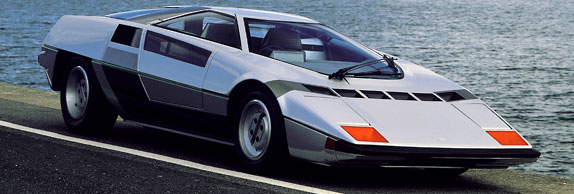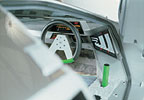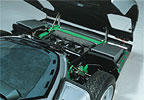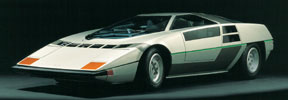 |
 |
 |
When the DOME project was started in 1975, DOME's planning office was located in a corner of the Macransa Office. There we started a study on sports car styling around 1976.
Over the course of time our main workplace moved to Hayashi Racing's workshop in Osaka, and the number of staff gradually increased. In Japanese racing circles in those days, a lot of fellows who had ambitions to enter racing car construction were beginning to feel frustrated, just like DOME. We gave up trying to become a racing car construction company and decided instead to develop road sports cars. Under such a situation, it is not too much to say that most Japanese car designers/constructors of repute were concentrated at our workshop. Staff members from all over Japan rented rooms near the workshop in the industrial district of Osaka, but the DOME-ZERO development schedule was so tight that they went back to their rooms only infrequently and even then only to take a bath. Although we completed the DOME-ZERO in time for the 48th Geneva Motor Show, the two years leading up to the Show were miserable in a sense; there were four married staff members at the outset of the development project, but all of them found that their wives had left them by the end of the two years.
We knew that without the success of this prototype, there would be no bright future. Since we intended, from the outset, to launch the DOME-ZERO as a spectacular symbol of DOME's debut, the basic concept of the car was to simply make a strong impression. At the same time, the process involved in DOME-ZERO development brought to the staff members, who had previously been focusing only on racing car building, fresh experiences such as fabrication of the fuel tank from pressed steel, development of the windshield, and the designing of retractable headlights. We flatter ourselves that our sincere and serious development efforts, including a renewed study on general passenger car design, enabled us to complete the DOME-ZERO with satisfaction and confidence despite the lack of sufficient experience.
The DOME-ZERO created a great sensation at the Show, and we received various media coverage every day. Immediately after we came back to Japan with the slight hope of gaining business opportunities, we surprisingly received an offer of a merchandising contract from a toy manufacturer.
Although we were delighted to immediately enter into the contract, several other offers came before the toy manufacturer visited us to finalize arrangements. It was eventually decided to conclude, with all the latter offers, a license agreement for their each relevant product item.
These license agreements later enabled us to construct our headquarters in Kyoto and participate in the Le Mans 24-hour race. If we had accepted the first offer, 4 million yen for the blanket rights for merchandising, and had entered into a contract, today's DOME would not exist.
For more than a year after the Show, we concentrated on efforts to gain homologation for the DOME-ZERO from the Ministry of Transport of Japan (currently the Ministry of Land, Infrastructure and Transport). Actually it did not deserve to be called "negotiation"; it was like beating the air, or like water off a duck's back, or whatever, sometimes combined with a menacing demeanor like a "hedgehog." It was a bureaucratic world where those having a sound mind were very unlikely to survive. Thinking that it was useless to make any more negotiation efforts with such bureaucrats, we gave up the idea of obtaining Japanese homologation.
We established DOME USA to develop the DOME P2 with the intention of acquiring U.S. homologation. In the course of this project, however, we had the opportunity to participate in the Le Mans 24-hour race. As our staff were all "racing mad," being a challenger at Le Mans was a tremendously exciting prospect. As a result, the P2 project faded away.
>>> car
museum top
|
   |


|
|
